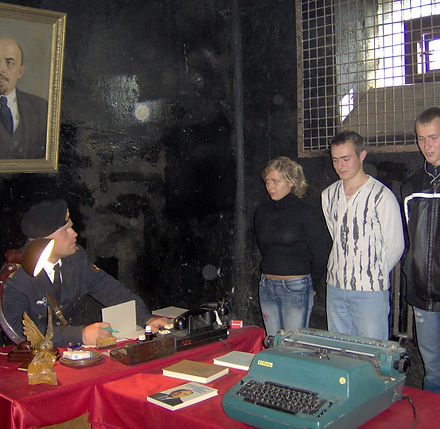
Politics in Dark Tourism
Concepts, Issues and Significances
FREYA EVANS
University of Central Lancashire
TL3067
Dark Tourism and Thana-events
PUNISHMENT
A Governmental Presence
Chronological Distance
One way in which politics is used to manage Dark Tourism is to control the time capacity in which to commemorate or educate. With regards to punishment, there is indeed a connection between the time in which a site becomes a Dark Tourist Site, and the political or economic justification for prisoners to receive such sentences (Williams, 2007: 134). Some academics have even suggested that this connection is so strong within contemporary society that the margins have become indistinct (Stone, 2006). What is more, this concept can be applied to the model of Chronological Distance. Defined as the social authorisation of Dark Events, the model considers spatial intervals between the time in which a Dark Event first occurs and the transformation of that particular theme into an attracting visitor site (2006: 149; Lennon & Foley, 2000).
Issues
In a postmodern society, the issue then occurs where political influence is also concerned. As events occur which become historically renowned such as the Cambodian Genocide, World War Two, or the Apartheid Regime, a politician’s response is globally projected through the aid of media and instant access to news worldwide. Tanaś (2008: 57) notes here that it has long been a social tradition to participate in remembrance, which has become the shared selling point for both politics and tourism alike.
Consequences

With political figures visiting sites of Dark heritage in order to demonstrate commemoration, it becomes a spectacle for the larger community to observe, where there becomes a Governmental Presence within the site. Academics have recently called attention to the concept of spectating, with Yuill (2003) stating that the image people view becomes reality, accepting the visual narrative to be authentic. This spectacle then transforms the Social acceptance to visit such sites, thus marking the final conversion into a visitor site along Chronological Distance.

Dark Tourism Spectrum
Introduced by Stone (2006: 145) as a “Fluid and dynamic spectrum of intensity” that can categorise attractions into shades of darkness and lightness according to their defining characteristics. Academics have noted the Dark Tourism Spectrum but further analysis is necessary to expand the concept of site classification further (Hartmann, 2013: 7).
Issues
The issues surrounding Stone’s Dark Tourism Spectrum is threefold. Firstly, the concept of categorising intensity within the sphere of Dark Tourism may appear unethical in its own manner, as the suffering of one victim has been labelled more socially appropriate than that of another case. Secondly, and with particular reference to the theme
of punishment, there is also an apparent blur between characteristics in which attractions overlap. Such an example can be seen in Karosta Prison Hotel. Presented as an active participant tour, this feature would reflect the Lighter side of the Spectrum, nevertheless the Location authenticity and Higher Political Influence represents the Darker side of the Spectrum. Thirdly, the spectrum does not accommodate for sites that target several markets. Though the spectrum provides a stimulating insight into the varying approaches to present Dark heritage, the spectrum should be observed with a provisional outlook, as the management of Dark Tourism sites are subject to change according to the political and economic influence at the present time.
Consequences
Is it degrading for the victims that suffered some of the methods of punishment presented within The Dungeons? Should historic events that contain punishment be the theme for comedic entertainment? The answer remains unknown however, it can be said that the history displayed to visitors at all of the Dark Tourist attractions contains suffering and pain. This then introduces the concept of ethical representations and the degree of authenticity as a consequence.
In relation to the Chronological distance theory, a Governmental Presence among Dark Tourist Sites can affect the category in which a site is placed. This can conflict with the management of the site, if efforts have been made in which to lighten and inspire rather than lament. A current example of this is Robben Island (Please see Ethics, Representation and Authenticity for more).

© 2014 by Freya Evans. Proudly created with Wix.com